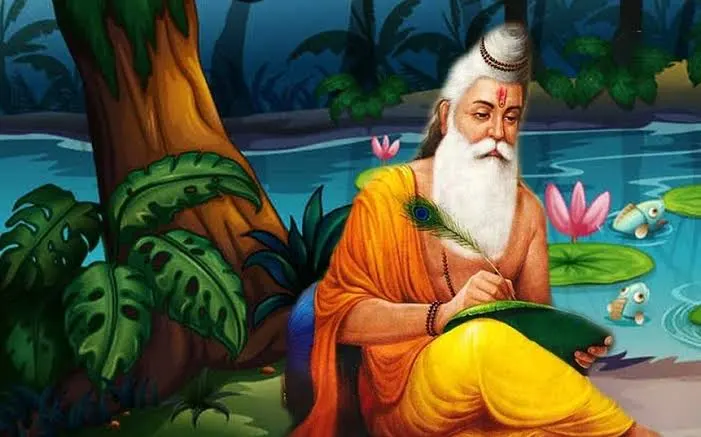Vashistha rishi Nadi Astrology

Vashishta is one of the Saptarishis (Seven Great Sages Rishi), is a manasputra of God Brahma. He was the owner of in his possession godly cow Kamadhenu as well as Nandini her daughter, who were able to grant any wish the owners of their animals. Arundhati is one of the names of Vashista’s wife. of Vashista.Vashista one of 9 Prajapatis is recognized as the principal writer of Mandala 7 of the Rigveda. Vashista as well as his entire family are honored in RV 7.33 in which they praise their participation in their role in the Battle of the Ten Kings and making him the sole mortal other than Bhava to have the Rigvedic song dedicated to his memory.
Another work attributed by Vashista is “Vashista Samhita” – it is a book about the Vedic system of electoral astrology.Vashista is featured in many stories and folklore and legends, some of that are briefly discussed below. In the story of Ramayana Vashista is portrayed as the sage of the court of King Dasharatha.The legend of Vashistha Sage Vashistha was the guru of Ram and was the Rajpurohit of Ikshwaku dynasty. He was a peaceful person, selfless, smart and powerful Rishi.
He founded the Gurukula (residential college) on the banks of the river Beas in which he and wife Arundhati were in charge of many thousands of students.Vashistha was the most revered Sadguru of his time, having the 20 “kala’s” (divine arts) and possessed a complete understanding of the entire universe as well as the god.
A lot of His Shlokas are discovered in Vedas and other Vedas as well.Vashistha invokes Kamadhenu as Sabala who is known as the Cow of abundance, to supply the feast. Vashista was the owner of a cow named Nandini, daughter of Kamadhenu who was able to instantly create enough food to feed an entire army. The King Kaushika (later named Vishwamitra) who toured Vashistha’s abode, was amazed by the cow. He tried to take it of Vashistha by force but the spiritual power of Kamadhenu/Nandini was just too powerful for him.
After failing to conquer Nandini, Vishwamitra decided to gain power through the same penance as Vashistha. He gained a lot of power as well as many sacred weapons through Shiva. Again, he tried to take on Kamadhenu/Nandini. But even the divine weapons he acquired could not defeat the power of Kamadhenu/Nandini.Vishwamitra finally decided to become a Brahmarishi himself, he renounced all his possessions and luxury and led the life of a simple forest ascetic.
Vashista Ashram
Brahmrishi Vashistha was the founder of the Ashram in Ayodhya which was spread across 40 acres (160,000 square meters) of land. What there is of it is an ashram that is small in around one-fourth of an acres of land. The Ashram has within it a water source which is considered to be the source of the River Saryu. Brahmarishi Vashistha was the Guru of the Suryavamsha. The King of the period was king Ishvaku, who was King of Ayodhya. He was a king of noblest character and was aware of the wellbeing of his people. He came to Sage Vashista telling him that the land was lacking no water and asked the Sage to do something to ensure that the kingdom have enough water. Sage Vashistha made a special prayer, and the Saryu river Saryu is believed to have begun flow from the well. Sarayu is also referred to by the names of Ishvaki as well as Vashisti.
It is believed that the water source is connected underground to the river. Many spiritual individuals who visit this ashram feel immense spiritual energy in the well. Some believe that it is one of the better spiritual tirths in Bharat (India). There is another ashram located in Rishikesh in the direction of Kaudiyal along the Devprayag road which is called Vashistha Guha Ashram. The ashram is situated along the bank of the River Ganges and it is an extremely beautiful place. It has an underground cave that has the inscription of a Shiv Ling in the cave. At the head of the ashram is an orthodox monk of South Indian origin by the name of Swami Chetananda. There is an additional small cave on the other side that faces the river.
